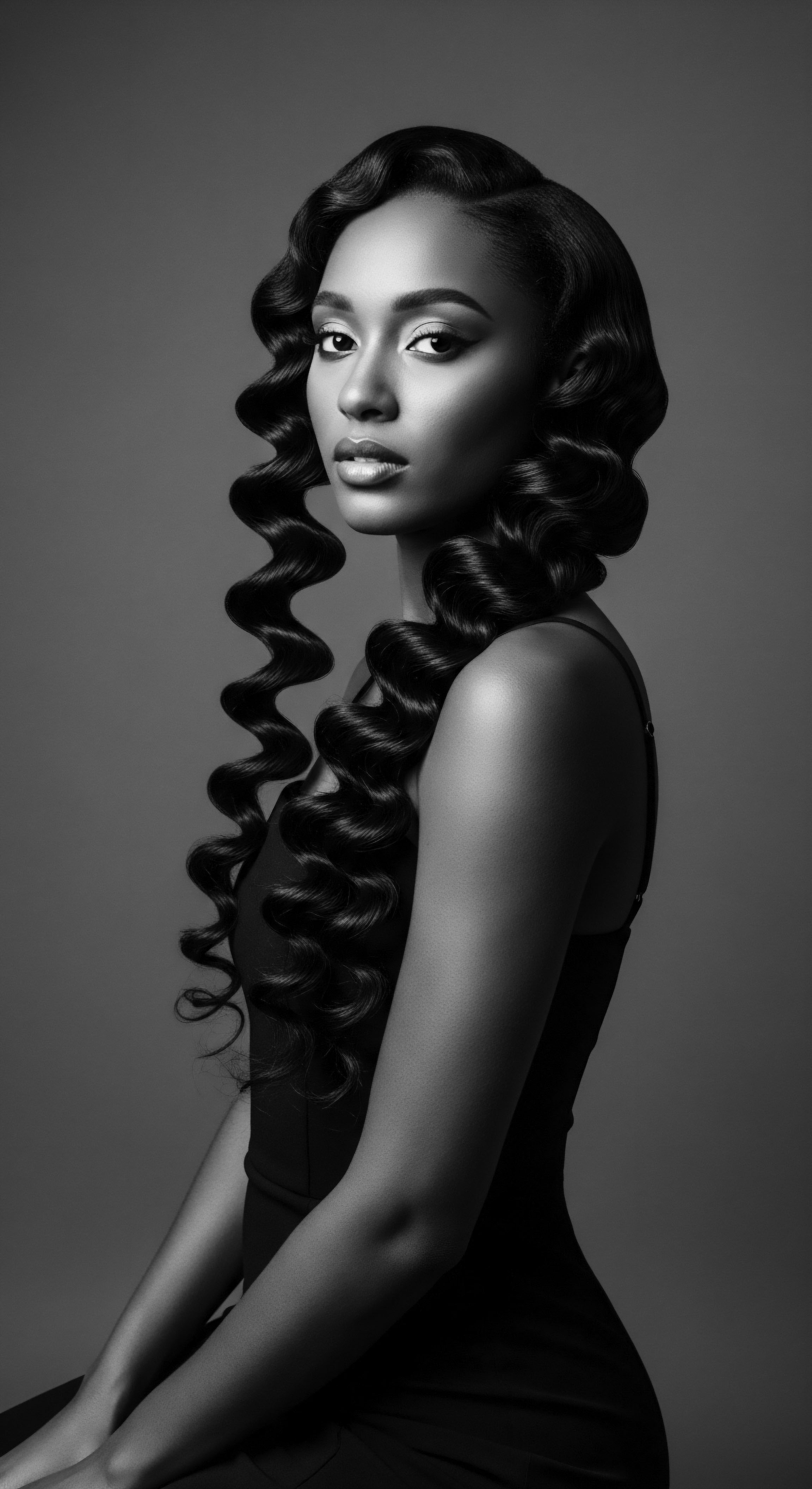
Roots
The very strands that crown our heads hold whispers of epochs long past, a silent, yet resonant, chorus of ancestral wisdom. Our modern natural hair movements, vibrant and diverse, are not a sudden awakening. They are, rather, the powerful resurgence of a deeply rooted heritage, an echo from the source where textured hair was not simply a physical attribute, but a living archive, a sacred connection to identity and lineage. This journey begins at the biological heart of the coil and kink, understanding it not as a deviation, but as a masterpiece of natural design, celebrated across generations.

The Architecture of Textured Hair
Consider the profound biological marvel of textured hair, a structure often misunderstood through a singular lens. Unlike the cylindrical cross-section of straighter hair, the follicles that birth our curls and coils are typically elliptical. This distinct shape guides the hair shaft into its characteristic curl, creating a more complex pathway for natural oils and requiring specific methods of care. Ancient communities, without microscopes or chemical analyses, understood this inherent difference intuitively.
They observed how textured hair behaved, how it responded to moisture, to manipulation, to the very environment, developing practices that honored its unique character. This foundational understanding, born from countless observations and generational knowledge, laid the groundwork for hair care methods that prioritize the hair’s natural inclination.
From the ancestral view, hair was observed as a reflection of inner vitality, its texture and health indicators of overall wellbeing. The spiraling nature of coily hair, for instance, might have been seen as mirroring the cyclical rhythms of nature or the intricate patterns found in traditional art. This holistic perception, where hair biology was inherently linked to life itself, guided the creation of practices designed to maintain its strength and beauty.
Textured hair, with its unique elliptical follicle, embodies a natural masterpiece, echoing ancestral wisdom in its very design and inspiring heritage-rich care.

Naming the Textured Canvas
Modern classification systems, like the widely known Andre Walker typing, attempt to categorize textured hair into numerical and alphabetical sequences (e.g. 4C, 3A). While these systems offer a descriptive shorthand, they stand in stark contrast to the fluid, culturally embedded lexicon of ancient peoples. In many pre-colonial African societies, hair classification was less about rigid type and more about the interplay of texture, style, and meaning.
A particular braid pattern, for example, might denote the wearer’s age, marital status, or even their tribal lineage, rather than a universal curl type. The language around hair was therefore contextual, deeply communal, and imbued with cultural significance.
The Himba women of Namibia provide a compelling illustration of this cultural naming system. Their hair, known for its iconic coating of otjize , a paste of butterfat, red ochre, and aromatic resins, is styled in ways that signify distinct life stages. A young girl’s hair, for instance, might be worn in two braids known as Ozondato, symbolizing youth and innocence. As she matures, a braid might come to cover her face, signaling readiness for marriage.
Once married or having had a child, an ornate headpiece called the Erembe, sculpted from sheep or goatskin and further enhanced with otjize-coated braids, indicates her new status. These styles are not just aesthetic choices; they are a visual language, a living narrative, where each strand, each braid, communicates a profound story about identity and belonging within the Himba community. The practice of applying otjize itself serves multiple purposes ❉ it protects the hair and skin from the harsh desert sun, repels insects, and holds deep symbolic meaning, representing the earth’s red color, blood, and the essence of life. This meticulous, culturally rich approach stands as a powerful testament to how ancient societies revered and understood textured hair, far beyond mere aesthetics.
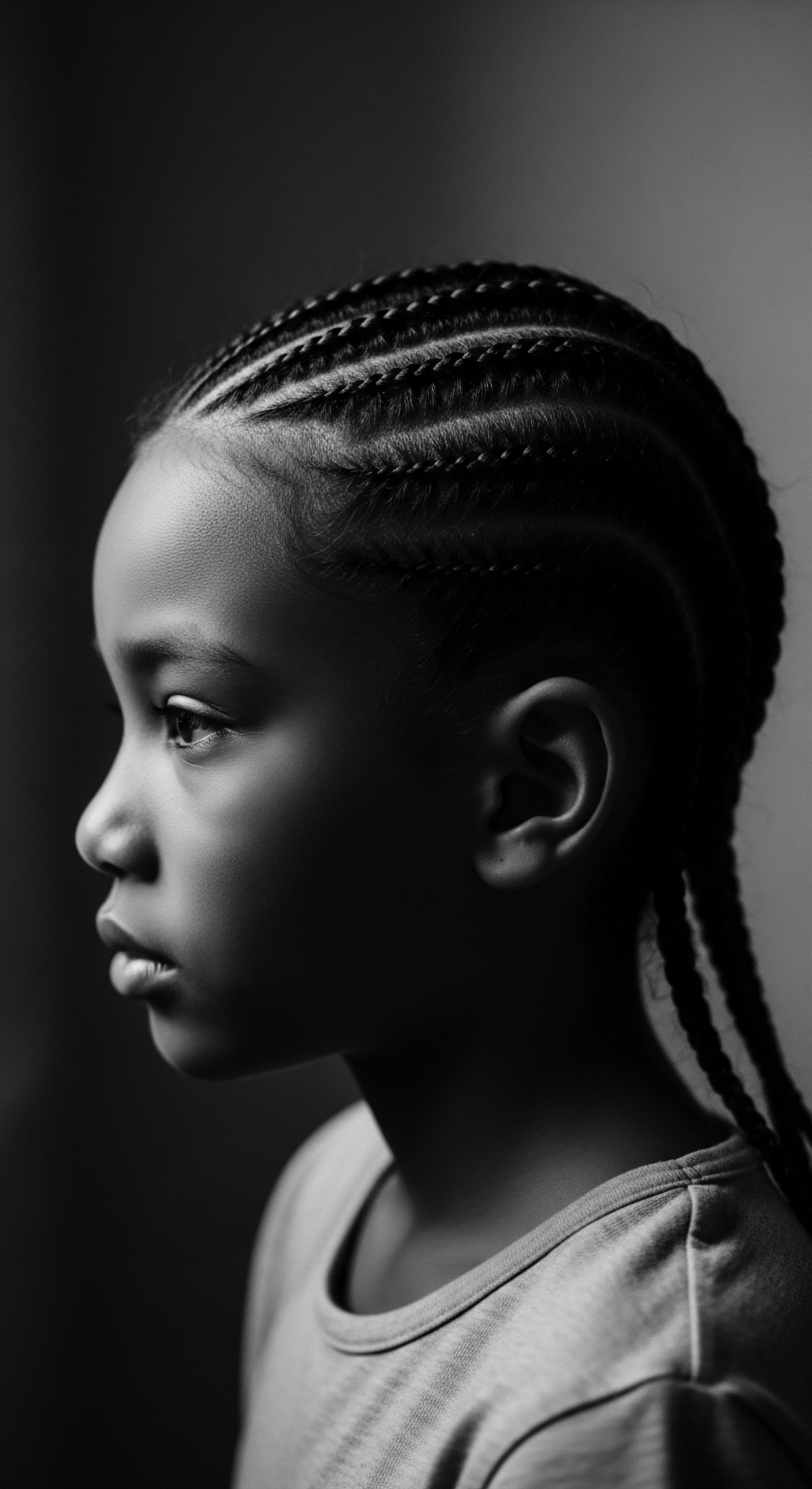
Ancestral Hair Lexicon
The traditional lexicon of textured hair extends beyond style names, encompassing terms for tools, ingredients, and the very act of hair care. These terms are often untranslatable into single English words, carrying layers of cultural meaning. The rhythmic click of traditional combs, carved from wood or bone, or the communal gathering for braiding sessions, were not just functional acts.
They were acts steeped in collective memory, fostering bonds and transmitting cultural knowledge. Many contemporary natural hair enthusiasts, perhaps unknowingly, draw upon this ancestral vocabulary through practices that echo these ancient communal rituals.
- Chebe Powder ❉ Sourced from Chad, this powder made from the seeds of the chebe plant, traditionally mixed with oils or fats, was used by Bassara women for length retention.
- Shea Butter ❉ From the shea tree, revered as “The Sacred Tree of the Savannah,” this versatile butter has been used for centuries for its moisturizing properties for both skin and hair.
- Rhassoul Clay ❉ Originating from Morocco, this clay was used as a natural cleanser, purifying hair and scalp without stripping them.

Ritual
The modern natural hair movement, at its heart, is a renaissance of ancestral ritual. What began as necessity in ancient societies, safeguarding strands from the elements or signifying social standing, has evolved into a conscious re-engagement with care practices. These practices are deeply rooted in heritage, celebrating the artistry and profound communal connections woven into the very act of styling textured hair.
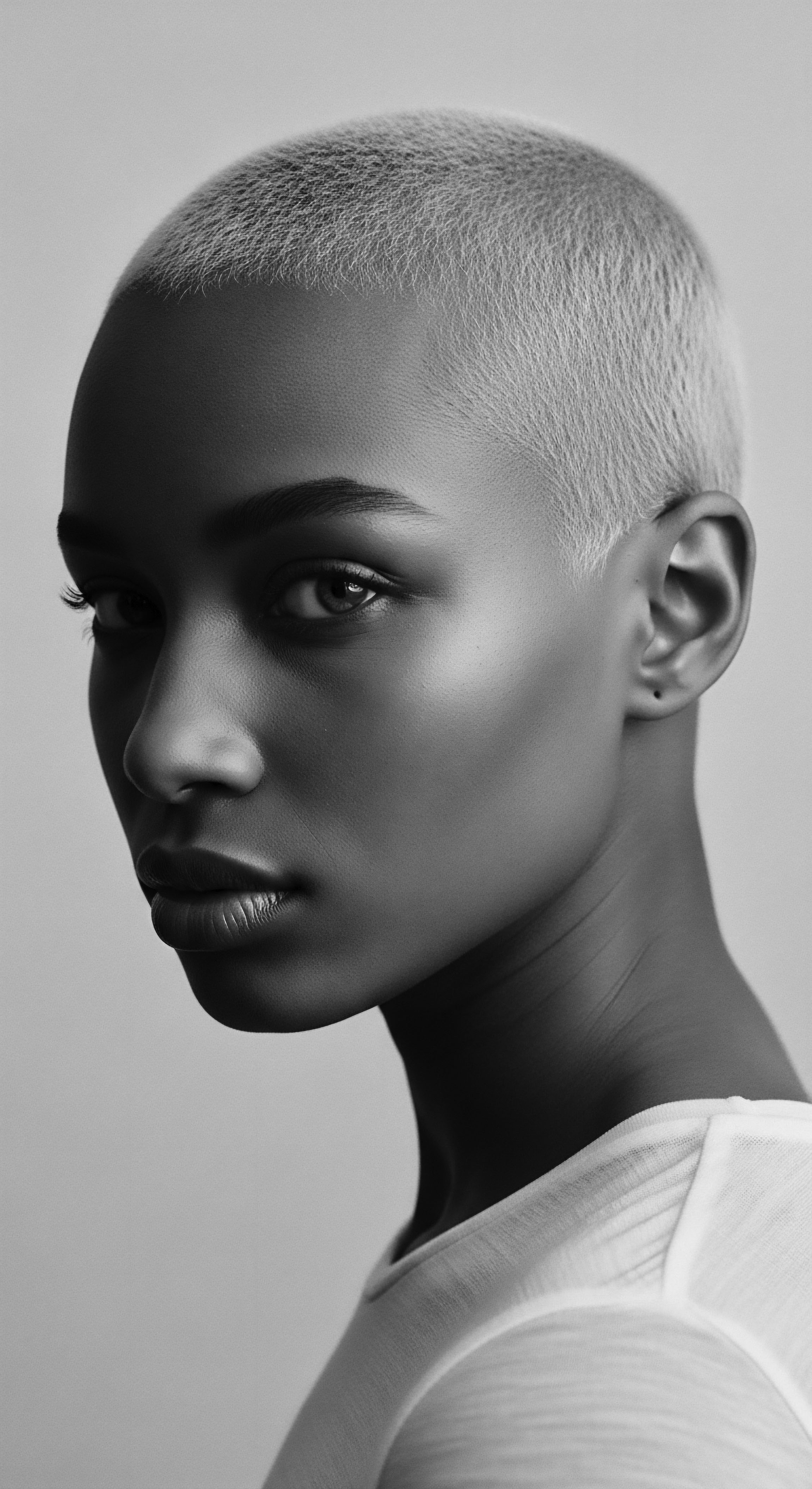
Styles as Cultural Cartography?
Throughout Africa’s long history, hairstyles served as intricate maps, communicating complex social information without uttering a single word. Braids, twists, and locs were not merely aesthetic choices. They were visual declarations of identity, announcing an individual’s age, marital status, tribal affiliation, social rank, and even religious beliefs.
For instance, archaeological finds dating back to 3500 BCE in the Sahara desert reveal the earliest known depictions of braids, underscoring their ancient roots. The Fulani people of West Africa, for example, are renowned for their intricately braided cornrows, often adorned with beads or cowrie shells, each element carrying specific meaning.
This tradition of hair as a form of communication extended through the horrors of the transatlantic slave trade. Enslaved Africans, stripped of many aspects of their culture, carried their hair traditions with them. There are accounts suggesting that cornrows were used to create secret maps, guiding individuals along escape routes or hiding rice seeds to sustain them on their desperate journeys to freedom. This powerful act transformed a styling ritual into a tool of survival and resistance, a profound testament to the enduring spirit of textured hair heritage.
Ancient African hairstyles were visual maps, conveying identity, status, and narratives, a legacy that continued through generations and even during periods of immense struggle.

Hand and Tool in Harmony
The tools and techniques employed in traditional African hair styling were extensions of the natural world, crafted with an intuitive understanding of textured hair’s needs. Hand-braiding, finger-coiling, and knotting techniques required immense skill and patience, often taking hours or even days to complete. This meticulous process was communal, typically involving mothers, sisters, aunts, and friends gathering to create styles, fostering strong social bonds. Braiding sessions became spaces for sharing stories, wisdom, and laughter, strengthening familial and community ties across generations.
Traditional implements, such as wide-toothed wooden combs, bone pins, and various plant fibers used for extensions, were designed to gently work with the hair’s natural curl pattern, minimizing breakage. Modern hair care, in its embrace of low-manipulation styles and natural material tools, echoes this ancestral gentleness.
| Ancient Tool/Material Wide-toothed Wooden Combs |
| Traditional Use in Hair Heritage Detangling and styling without snagging coily textures. |
| Modern Parallel/Principle Modern wide-tooth combs and brushes designed for textured hair. |
| Ancient Tool/Material Plant Fibers / Goat Hair |
| Traditional Use in Hair Heritage Adding length and volume, creating elaborate, symbolic styles like Himba braids. |
| Modern Parallel/Principle Synthetic and human hair extensions for protective styles. |
| Ancient Tool/Material Natural Clays (e.g. Rhassoul) |
| Traditional Use in Hair Heritage Cleansing scalp and hair, drawing out impurities while retaining moisture. |
| Modern Parallel/Principle Clay masks and non-stripping cleansers in natural hair regimens. |
| Ancient Tool/Material Oils & Butters (Shea, Marula, Ghee) |
| Traditional Use in Hair Heritage Moisturizing, sealing, and protecting hair from environmental stressors. |
| Modern Parallel/Principle Sealants and leave-in conditioners for moisture retention. |
| Ancient Tool/Material These parallels reveal a timeless wisdom regarding textured hair care, passed down through the heritage of collective ingenuity. |
The practice of hair wrapping, too, carries a rich historical weight. Head wraps, known by various names such as Gele in Nigeria or Duku in Ghana, have adorned African heads since the early 1700s, signifying age, marital status, and prosperity, and offering practical protection from the sun. During periods of enslavement and later under laws like the Tignon Laws in Louisiana, which mandated that Black women cover their hair, head wraps became a symbol of oppression.
Yet, Black women transformed these restrictions into acts of quiet rebellion, using luxurious fabrics and elaborate wrapping styles to assert their dignity and cultural pride. This act of turning imposed restriction into a statement of self-possession deeply mirrors the resilience central to the modern natural hair movement.
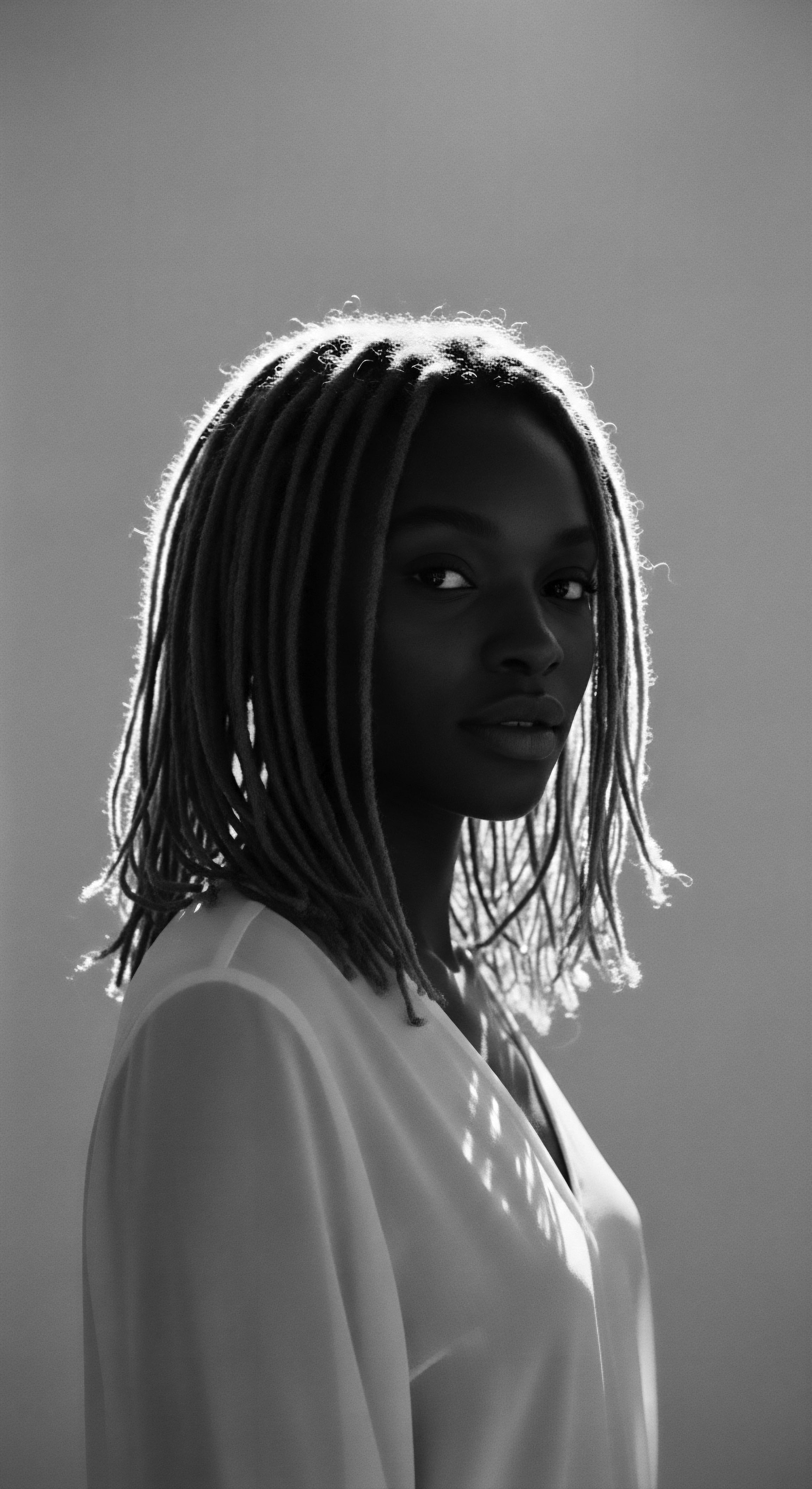
Relay
The modern natural hair movement, rather than being a distinct innovation, serves as a relay, passing the torch of wisdom from ancient hands to contemporary practices. This relay carries not just techniques, but an entire philosophy of holistic wellbeing, problem-solving, and identity affirmation deeply rooted in ancestral care. It recognizes that genuine hair health extends beyond surface appearance, connecting to internal harmony and a profound sense of self.

Building a Regimen from Ancient Blueprints?
Ancestral hair care was inherently holistic, recognizing that external presentation was a reflection of internal health. Traditional practices often involved a synergy of nourishing diets, herbal remedies, and communal grooming rituals. Foods rich in essential nutrients, alongside the use of plant-based ingredients applied directly to the hair and scalp, formed the bedrock of care. This deep-seated understanding that what enters the body contributes to its outer vitality, hair included, resonates strongly with contemporary wellness movements advocating for mindful nutrition and natural ingredient choices.
The act of communal grooming itself was a significant aspect of traditional regimens. These gatherings reinforced social bonds, allowing knowledge to be passed down through generations, often alongside stories and songs. This shared experience fostered a collective understanding of hair care and its connection to community wellbeing. Modern naturalistas, gathering in online forums, at meetups, or sharing techniques through social media, replicate this communal aspect, extending the ancestral circle into a digital space.
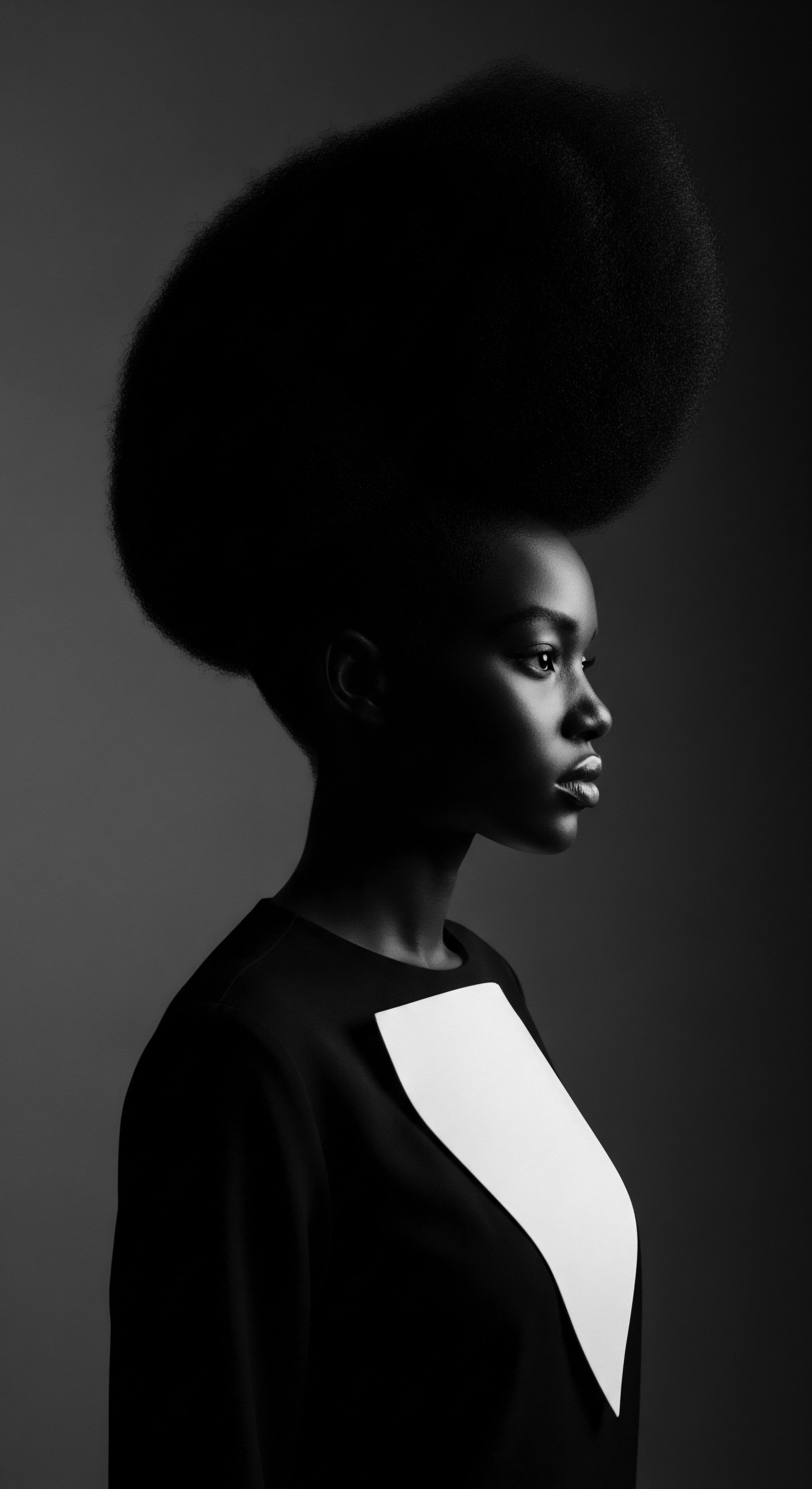
The Nighttime Covering Legacy
The practice of covering textured hair at night, a staple in many modern natural hair regimens, is a direct continuation of ancestral protective rituals. Head coverings, whether simple cloths or elaborate wraps, served multiple purposes in ancient African societies. They protected delicate styles from dust and debris, preserved moisture, and also carried cultural and spiritual significance. In some traditions, covering the hair was a sign of respect, modesty, or even a way to shield one’s spiritual essence.
For communities living in arid climates, head wraps provided essential protection from harsh sun and wind. In the diaspora, as noted earlier, head wraps became a powerful symbol of defiance during eras of enslavement and oppression. The contemporary use of satin-lined bonnets, scarves, and pillowcases for sleep protection is a practical evolution of this long-standing tradition, acknowledging the need to minimize friction and moisture loss for textured hair. This simple, yet potent, act connects us directly to the wisdom of our forebears, who intuitively understood the need for gentle care during periods of rest.
The legacy of head coverings is rich with meaning, extending beyond mere hair protection. They represent:
- Practicality ❉ Protection from environmental elements like sun, dust, and wind.
- Status ❉ Indicators of age, marital status, or social standing in various African communities.
- Spirituality ❉ Connection to the divine, modesty, or protection of spiritual essence.
- Resistance ❉ A symbol of cultural preservation and defiance during slavery and discriminatory periods.
These layers of meaning underscore how a seemingly simple accessory carries generations of heritage.

Ingredients ❉ Old Wisdom, New Validation?
Many of the ‘new’ superstar ingredients in the natural hair market are, in fact, ancient staples. Shea butter, marula oil, and rhassoul clay have been used for centuries across various African cultures for their profound nourishing and cleansing properties.
- Shea Butter ❉ Extracted from the nuts of the shea tree, its moisturizing and protective qualities were widely recognized and utilized in West Africa. Modern science now validates its richness in vitamins A, E, and F, and its ability to trap moisture and soothe skin.
- Marula Oil ❉ Known as “liquid gold” in some communities, this oil from the marula fruit kernels was cherished for its hydrating and antioxidant properties. Contemporary research confirms its high content of essential fatty acids.
- African Black Soap ❉ A traditional cleanser from West Africa, often made from shea butter and plantain ash, it was known for its gentle yet effective cleansing.
The discussion around “raw oils and butters” in modern natural hair communities often reflects a contemporary re-evaluation of how these ingredients are best used. Interestingly, many traditional African hair care methods involved the application of raw butters and oils, sometimes mixed with herbs, for length retention and moisture. The Basara women of Chad, for instance, are known for their practice of applying Chebe Powder mixed with herb-infused oil and animal fat, traditionally applied weekly to their hair, which they then braid to retain length. This challenges some modern natural hair notions, suggesting that optimal approaches can vary widely depending on desired outcome and environmental factors, always with a grounding in traditional observation.
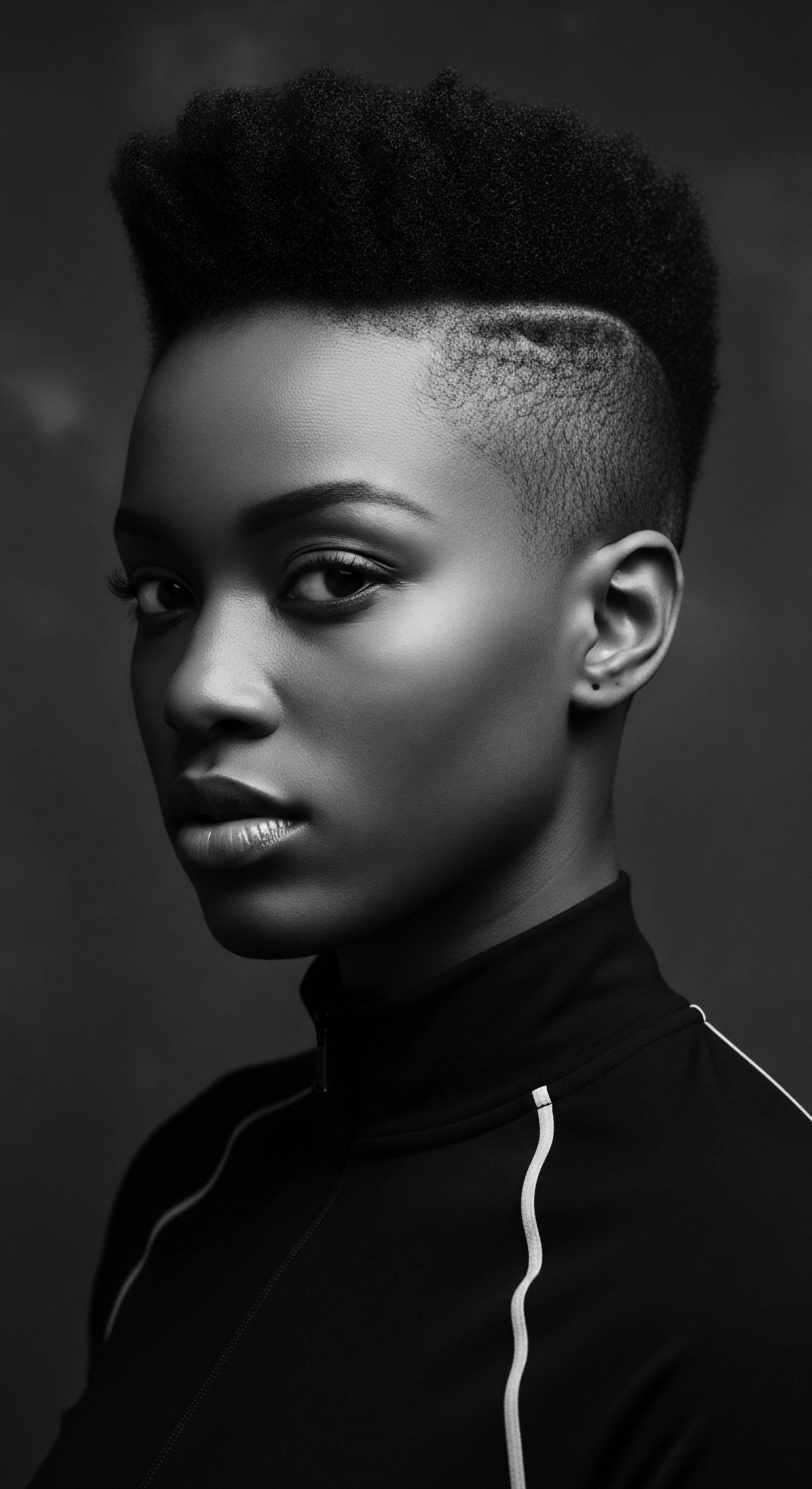
Hair as a Healing Compass
Just as ancient healers understood the interconnectedness of body and spirit, traditional hair practices often addressed hair issues as symptoms of broader imbalances. Dryness, breakage, or thinning might be approached not just with topical remedies, but with dietary adjustments, herbal infusions, or spiritual cleansings. This holistic problem-solving framework, where hair health is viewed through a lens of overall wellness, mirrors the modern natural hair movement’s emphasis on internal health for external radiance.
The deep cultural and spiritual significance attributed to hair meant that hair care was often intertwined with healing. In some African cultures, hair was believed to carry a person’s spiritual essence and could be used to communicate with ancestors. Hair rituals, such as symbolic shaving or specific styling for mourning, marked significant life events and reinforced communal bonds.
The modern return to natural hair, for many, is a profound act of self-healing, reclaiming a connection to ancestral beauty and resilience, moving beyond externally imposed standards to embrace inherent worth. This connection provides a powerful sense of rootedness and continuity.

Reflection
The vibrant currents of the modern natural hair movement are not isolated phenomena; they are rivers flowing back to ancient springs, carrying with them the timeless essence of textured hair heritage. Each curl, each coil, each strand bears the memory of ingenious ancestral practices, resilience against erasure, and the profound wisdom embedded in communal care. From the biological intricacies of the follicle, honored by early communities, to the elaborate styling that served as a visual language, conveying identity and status across generations—this enduring legacy pulses within us.
Our contemporary fascination with protective styles, the careful selection of nourishing ingredients, and the very act of covering our hair for rest, all echo practices that safeguarded strands and souls for millennia. The journey of textured hair, as Roothea envisions it, is a living, breathing archive, a testament to the unyielding spirit of Black and mixed-race communities. It reminds us that our hair is a crown, not merely of beauty, but of history, a physical link to the profound strength and artistry of our forebears. To engage with natural hair today is to participate in an ongoing conversation with heritage, to honor the tender thread that binds us to ancestral wisdom, and to shape a future where every helix unbound speaks volumes of belonging and power.
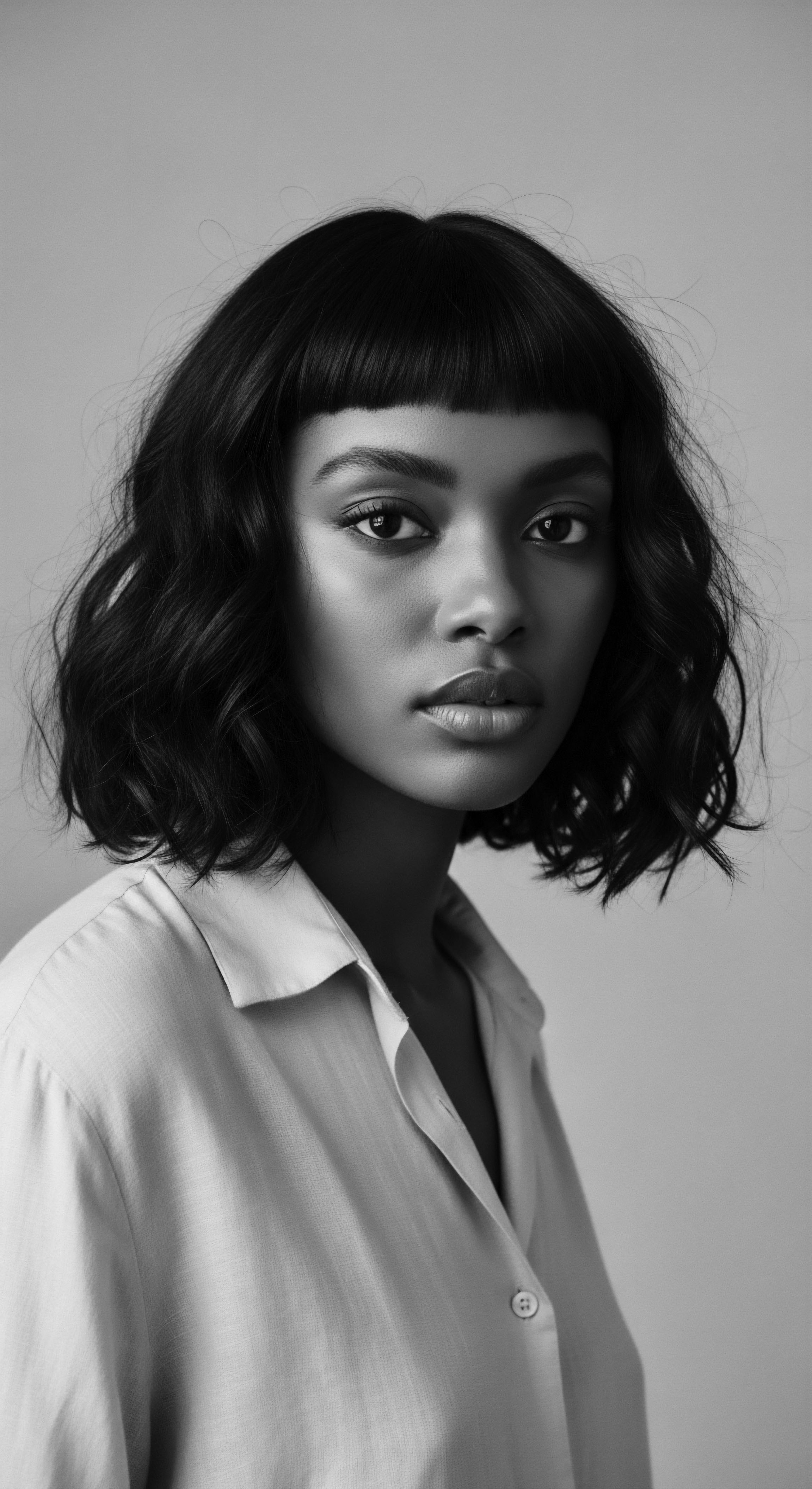
References
- Byrd, Ayana, and Lori L. Tharps. Hair Story ❉ Untangling the Roots of Black Hair in America. St. Martin’s Press, 2001.
- Diedrich, Walter. The Hair of the African ❉ A Bio-Cultural History. University of California Press, 2012.
- Ezeani, Nkechi. African Hair Braiding ❉ The Ancient Art of Adornment. African Cultural Heritage Press, 2008.
- Gale, Robert L. Black Beauty ❉ A History and a Celebration. St. Louis University Press, 2015.
- Johnson, Elizabeth. Rituals of Adornment ❉ Hair in African Societies. Cultural Traditions Publishing, 2018.
- Kelly, Sarah. The Anthropology of Hair ❉ From Ancient Practices to Modern Identity. Routledge, 2020.
- Mercer, Kobena. Black Hair/Style Politics. Institute of Contemporary Arts, 1994.
- Patel, Aliyah. Ancient Beauty Secrets ❉ Indigenous Ingredients for Radiant Skin and Hair. Global Wellness Publishers, 2023.
